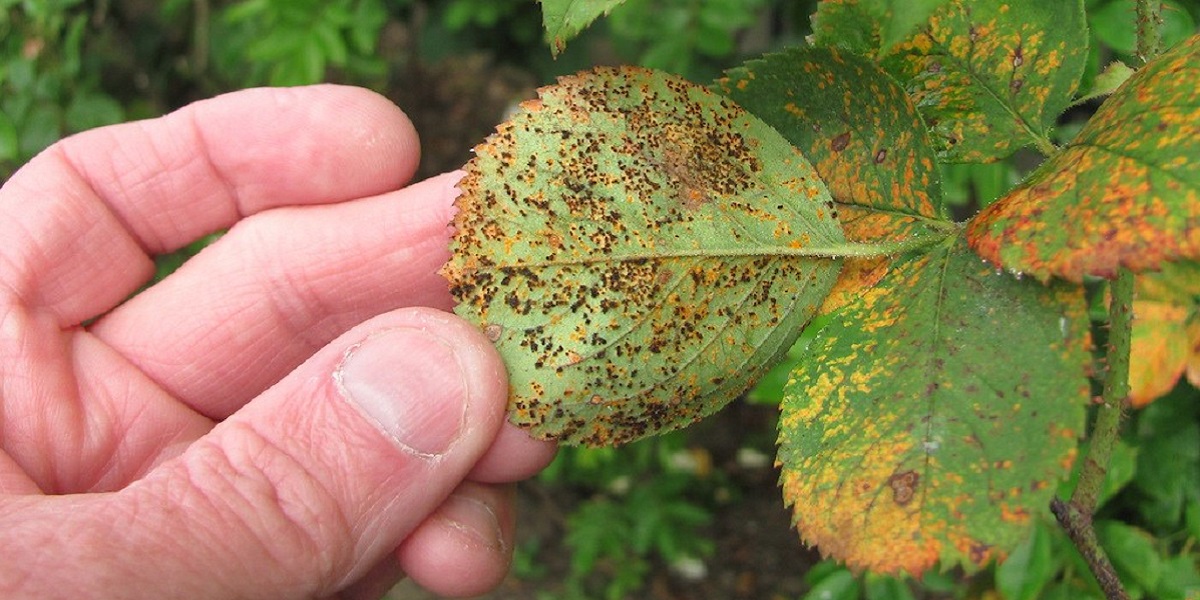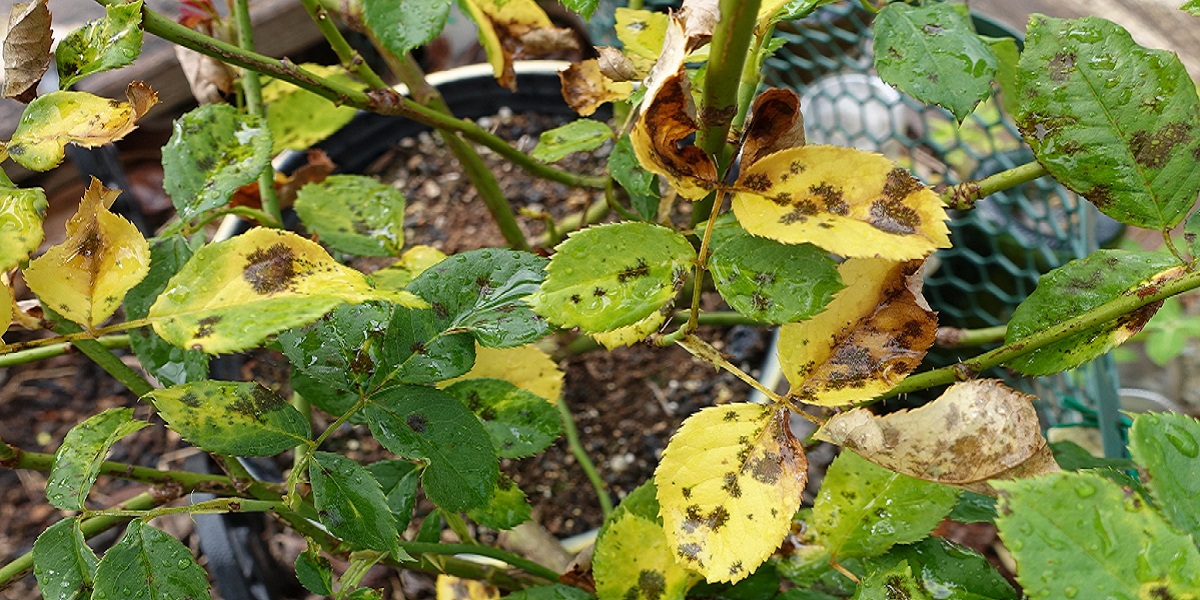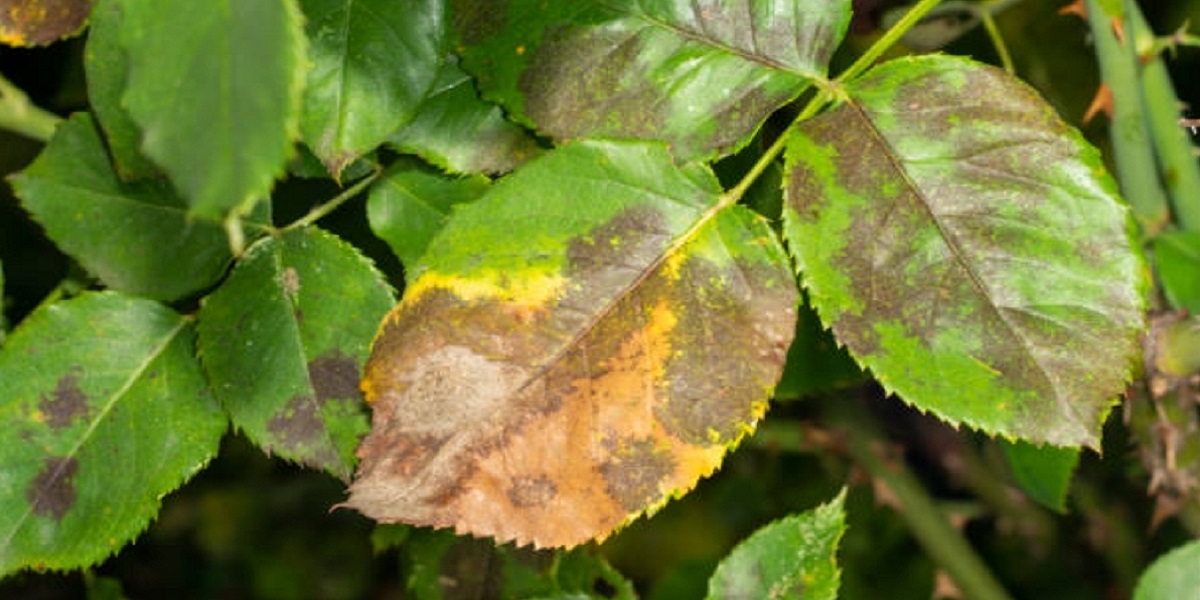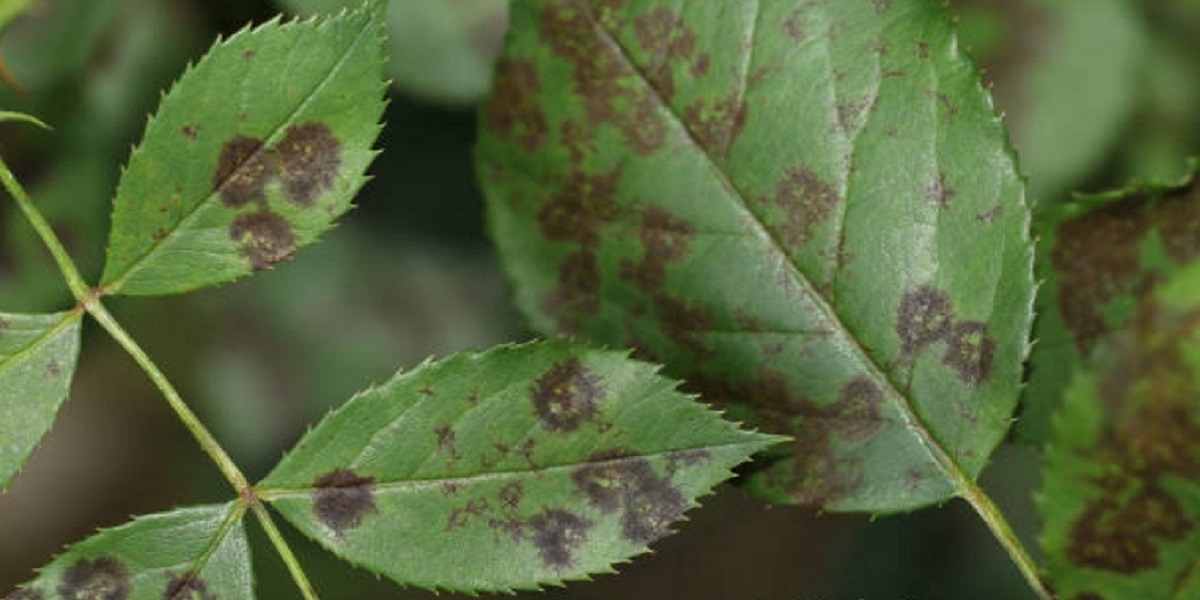Identifying one of the many plant diseases that potentially affect roses can be a challenging task. Visual inspection can prove not sufficiently insightful if you lack knowledge of houseplants and what problems they can develop in imperfect conditions.
Spotted rose leaves are no exception since there are several types of problems that such kind of appearance can be symptomatic of, all requiring different special care. The purpose of this article is to help you identify brown spots disease in roses and adopt the best practices to apply whenever you notice rose leaves turning brown. Since spotted leaves can be caused by a variety of reasons, this ability will depend, among other factors, on correct identification, which will enable you to tell the difference between relatively harmless aesthetic problems and severe rose diseases.
What Causes Rose Leaves to Develop Spots
Unfortunately, there is no culprit to hold universally accountable for brown spots of rose leaves. The first step to take if you see rose bush leaves turning brown is to educate yourself on the potential causes and how to differentiate between the conditions associated with them. This section of the article explains why you might find unsightly dark spots on the leaves on your roses.
Fungi
Fungi are a group of organisms that belong with neither plants nor animals and are different from bacteria which include, among others, mushrooms, molds, and yeasts. Most gardeners and flower lovers are better familiar with them than they would prefer to be because they often take residence on ornamental plants, causing them to develop diseases.

One of the most common fungal infections in roses that are associated with the appearance of brown spots is called, somewhat confusingly, black spot. The fungus species responsible for it is known scientifically as Diplocarpon rosae. It causes dark brown to black spots on leaves, which can also start yellowing and drop, and weakens the plant overall. The stems can be also affected.
Rose rust is another fungus that can cause a spotty appearance in rose leaves, but in this case, the spots are rather a reddish-brown or orange than brown to black. Bost diseases are common in warm and wet climates. The risk of being affected by either fungus increases considerably when plants grow tightly together, which can prevent the leaves from drying adequately. Poor watering practices such as excessive overhead watering on humid days can also contribute to the development of fungal diseases.
Abnormal sodium levels
It’s a common fact that balanced nutrient content in the soil is vital to the development of indoor plants as well as those in your garden. When a rose bush is not getting what it needs, it can affect its appearance as well as overall vigor. You should be aware, however, that it is also true when it comes to overabundance: when the soil is overly rich in a certain nutrient, it is likely to cause growth problems just as well. In the context of spotted leaves in roses, the element to blame is often sodium.
There are two main reasons why the soil you use can have more sodium than it should. First of all, living close to the sea or ocean almost invariably means increased sodium content. Secondly, overfertilization is a common cause of sodium-related dark spots on rose leaves. If you keep fertilizing the same area heavily for several years, you’ll most likely end up with too much sodium in the ground to produce healthy-looking plants.
Increased sodium levels generally manifest themselves through stunted plant growth and leaf yellowing. Brown spots are not the first sign to develop, however, a so-called burnt appearance is relatively common. It begins with yellowed margins and tips of the leaf, from where the problem progresses to the center, after which it often becomes dry and develops brown spots.
The only effective treatment for sodium-related leaf darkening in roses is to alter the chemical makeup of the soil by deep watering, which needs to be done gradually and consistently. Before you apply the practice, however, it’s important to rule out other potential causes.

Pests
Pests can cause aesthetic problems and become a huge burden to the plant as well as a threat to the rest of the garden. Some of them are easy to notice in roses because they cause leaves to change their color, in particular bringing about brown or brownish spots.
Rose slugs are an example of how a pest can cause unsightly changes in rose bush appearance. When this pest is present, you will usually see light brownish areas of leaves, which then become holes as the slug feeds on the plant.
Thrips are another common problem in rose growing. These winged insects are notorious for their ability to hamper the development of rose blossom and can often be detected by the appearance of an affected rosebud, which will likely be browned. Not everyone is aware of the fact that surrounding leaves can also change their color in case of a thrips invasion, in which case they develop brown spots. A similar picture can be seen in the presence of rose midges, which leave the buds black and the nearby areas a dark brown.
Sometimes what people describe as brown spots on rose leaves are the characteristic bronze-colored sheen caused by spider mites. This has little in common with the big brown areas that others describe with the same word.
When dealing with pests, whether in an indoor plant or grows in your garden, it’s important that you apply natural treatment that is not unnecessarily aggressive whenever possible, thus reducing the harm to your roses. Correct identification is key since most solutions are specific to a certain pest.
Nutritional deficiencies
Just like an excess of sodium, not enough nutrients such as nitrogen will cause the leaves of your roses to yellow, which can gradually develop to become brown spots in advanced cases. The process usually starts on the oldest foliage. It’s important to localize the discoloration in order to tell which nutrient the plant is lacking. For instance, iron deficiency usually shows between the veins of a leaf, while insufficient magnesium levels can cause small brown spots closer to the margins. When it comes to nutrient balance, your best bet is to measure soil content regularly and make amendments as needed.
Sunburn
Rose lovers often find this surprising, but the leaves of these delicate plants can get burned and develop brown spots when placed next to objects made of heat-reflecting material or growing in direct aggressive sunlight. The only possible solution to this problem is to change the growing conditions.

How to Find Out if Your Roses Have Brown Spots
The ability to detect and identify brown spots on roses in a timely and accurate manner is central to successfully finding a cure. Here are some simple steps to take to make sure your garden is not undernourished or consumed by a fungal disease.
- Make it part of your gardening practices to carry out a visual inspection at regular intervals.
- Look at the leaves of each bush, paying special attention to those that are located in shady areas where water might pool.
- Check the stems and buds as well.
- Whenever you find suspicious spots, be sure to take a photo. Firstly, it will enable you to trace your progress as you apply treatment and figure out whether what you are doing is right. Secondly, you can use it to identify the problem with our application, reducing the risk of mistreatment and thus lost time and possibly damage to the plant.
Brown Spot Control in Roses
As you may see from the above, brown spots are symptomatic of a wide range of rose problems, from pest invasions to poor nutrient balance in the soil to a fungal disease. The last possibility is arguably the one you should consider first because it is both common and dangerous.
Black spot can weaken the plant substantially. Given its transmission mechanism that relies on airborne spores, it’s also hard to prevent other bushes in your rose garden from contracting it. The treatment for black spot is specific to the pathogenic organism and may not work for other causes. We recommend that you consult our plant health app to make sure you know which problem you are dealing with.

Break the disease cycle
Pretty much any fungal disease, regardless of its classification, spreads due to spores, which travel from leaf to leaf and plant to plant by air but need moisture to start thriving. This transmission mechanism makes brown spots particularly difficult to treat on roses, especially in cramped gardens and flower beds. Environmental disease control tactics for it include the following:
- Pruning your roses to prevent moisture from accumulating in overgrown areas as well as to avoid excess shadow and ensure good air flow;
- Mulching the bushes to prevent soil, which contains fungal spores, from contaminating them;
- Avoiding overhead watering unless on a hot day when you can be sure that any water will dry out soon;
- Watering your roses sufficiently to avoid overly dry soil because it makes plants susceptible to diseases;
- Planting new bushes at a distance from each other;
- Ensuring enough sunlight for your roses.
These measures make an effective brown spot prevention strategy but should not be considered a guarantee. To maximize your chance of growing beautiful and healthy roses, pick varieties that are described as resistant to fungal diseases. If you already have cases of spotted roses in your garden, you’ll also need to apply chemical control. When left untreated, even innocuous brown spots on the leaves can hurt the plant considerably as the fungus drains its resources and deprives it of proper nutrition. This is why topical treamtnets remain highly popular.
Protect your plants chemically
Fungicides, or chemicals that kill fungi, are a popular solution to the brown spots and an effective one provided that they are caused by a fungal disease. Unfortunately, you cannot apply them unthinkingly as there is always that tradeoff between safety and effectiveness.
Today’s market offers a wide variety of fungicide sprays that work well for brown spots and do not damage the plant. You can pick a pet-safe product that’s also safe to use around children if that’s your case. When choosing a fungicide, it’s essential that you buy one that was designed specifically to fight brown spots and is rose-friendly. Following the instructions is vital, too.
It is relatively common to mix fungicides with insecticidal soap to kill fungi and pests at the same time. As an additional benefit, the soap adheres to the leaves and thus prevents the active ingredient from dripping off. However, we only recommend using this strategy if you have evidence of both insect and fungus problems.
Use a natural remedy
Now that integrated pest management, or IPM, has become central to gardening practices across the globe, avoiding harsh chemicals unless absolutely necessary is standard. When it comes to treating fungal brown spots on rose leaves, a valid strategy would be to estimate the severity of the disease and use natural remedies in combination with environmental measures whenever possible.
Baking soda in warm water is a popular treatment for pretty much any fungal infection in roses. It is likely less efficient than commercially made fungicides, but it can help in milder cases. Apart from that, neem oil is becoming increasingly popular in organic farming and gardening due to its ability to keep pests and fungi away.
How to Grow Spotless Roses
Whether the ugly blotches on the leaves of your roses are caused by malnutrition, a fungal disease, or pest insects, it’s critical that you adjust the growing conditions apart from treating the problem. Use our app to identify what’s causing the brown spots and act accordingly, but bear in mind that this will only work in combination with preventative measures such as adequate spacing and watering.
Have you ever come across brown blotches on rose leaves? You are most welcome to share your experience.
Leave a Reply
You must be logged in to post a comment.